-
 Bitcoin
Bitcoin $105,128.3815
3.90% -
 Ethereum
Ethereum $2,416.0020
7.44% -
 Tether USDt
Tether USDt $1.0005
0.02% -
 XRP
XRP $2.1746
8.78% -
 BNB
BNB $639.2755
3.53% -
 Solana
Solana $144.4068
7.70% -
 USDC
USDC $1.0000
-0.01% -
 TRON
TRON $0.2729
1.26% -
 Dogecoin
Dogecoin $0.1628
6.63% -
 Cardano
Cardano $0.5826
7.56% -
 Hyperliquid
Hyperliquid $37.1757
6.20% -
 Sui
Sui $2.7783
11.64% -
 Bitcoin Cash
Bitcoin Cash $462.3940
2.42% -
 Chainlink
Chainlink $13.1350
11.22% -
 UNUS SED LEO
UNUS SED LEO $9.1304
0.83% -
 Stellar
Stellar $0.2476
8.34% -
 Avalanche
Avalanche $18.0617
6.94% -
 Toncoin
Toncoin $2.9043
3.64% -
 Shiba Inu
Shiba Inu $0.0...01161
7.29% -
 Hedera
Hedera $0.1515
11.26% -
 Litecoin
Litecoin $84.2187
3.78% -
 Monero
Monero $313.8446
4.70% -
 Ethena USDe
Ethena USDe $1.0006
0.03% -
 Polkadot
Polkadot $3.4344
6.81% -
 Dai
Dai $0.9999
0.00% -
 Bitget Token
Bitget Token $4.2647
5.88% -
 Uniswap
Uniswap $6.9164
11.66% -
 Pepe
Pepe $0.0...09897
10.79% -
 Pi
Pi $0.5326
6.57% -
 Aave
Aave $259.4000
13.30%
Is it a risk or an opportunity for the RSI indicator to continue to trade sideways at a high level after breaking through 70?
When RSI stalls above 70 in crypto, it may signal either strong momentum or an impending pullback—always confirm with price action and volume before making a move.
Jun 24, 2025 at 11:15 am
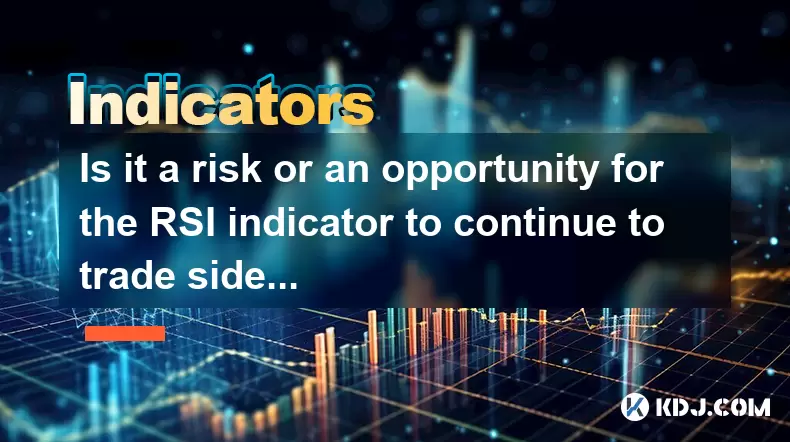
Understanding the RSI Indicator in Cryptocurrency Trading
The Relative Strength Index (RSI) is a momentum oscillator widely used by cryptocurrency traders to evaluate overbought or oversold conditions. Typically, RSI values range from 0 to 100, with readings above 70 indicating overbought territory and those below 30 signaling oversold conditions. However, in volatile crypto markets, RSI can behave unpredictably, especially when it breaks through 70 and continues trading sideways at high levels for an extended period.
This phenomenon raises critical questions among traders: Is this sideways movement after breaking 70 a risk or an opportunity? To answer this, we need to analyze how RSI functions within the context of cryptocurrency price action and market psychology.
Tip: Always consider RSI in conjunction with other technical indicators like moving averages or volume to avoid false signals.
What Does It Mean When RSI Breaks 70 and Stalls?
When RSI crosses above 70 and remains elevated, it suggests that buying pressure has been strong enough to push prices upward. However, if it doesn't continue rising but instead trades sideways, it may indicate a pause or consolidation phase rather than a reversal.
In cryptocurrency markets, such behavior can occur during bull runs where buyers keep pushing prices despite overbought readings. This often reflects strong investor confidence and sustained demand for a particular asset. In contrast, in weaker uptrends, this could signal exhaustion among buyers and the potential for a pullback.
Important: A stalled RSI above 70 should not be interpreted as an automatic sell signal without further confirmation from price action or volume data.
Identifying Risks in Extended High-Level RSI Readings
One major risk associated with RSI remaining above 70 for prolonged periods is the possibility of a sudden reversal. If the price fails to make new highs while RSI stays elevated, a bearish divergence may form, suggesting weakening momentum.
Another risk lies in trader psychology—many retail investors may interpret overbought conditions as a sign to take profits, which can trigger selling cascades even in otherwise bullish environments.
- Monitor candlestick patterns for signs of rejection at resistance levels.
- Watch for volume spikes on downward candles, which might signal increased selling pressure.
- Use trendlines to identify potential breakdown points in the current price structure.
Opportunities Presented by Stable High-Level RSI Conditions
Conversely, a stable RSI above 70 can also present opportunities, particularly in trending markets. If the price continues to move higher or consolidates in a tight range, this may reflect healthy accumulation by institutional players or whales who are not deterred by traditional overbought levels.
Traders can use this scenario to enter long positions after confirming support levels or breakout patterns. In such cases, the RSI’s sideways movement indicates equilibrium between buyers and sellers, rather than a clear reversal signal.
- Look for retests of key support levels as entry points.
- Combine RSI with Bollinger Bands to gauge volatility compression before potential breakouts.
- Analyze order book depth to determine whether large buy walls are forming near current prices.
How to Differentiate Between Risk and Opportunity Using RSI Behavior
To distinguish whether a high-level RSI stall is risky or opportunistic, traders must examine several factors:
- Price structure: Is the price still making higher highs and higher lows?
- Volume profile: Is volume increasing on up days or declining?
- Market sentiment: Are there macro-level developments influencing investor behavior?
If the price continues to rise alongside stable volume and positive news flow, the RSI hovering around 70 may indicate strength rather than weakness.
However, if volume declines significantly and price begins to show indecision or failure at resistance, then the sideways RSI may serve as an early warning sign.
- Check weekly and daily charts to assess overall trend integrity.
- Compare RSI across multiple timeframes to filter out noise and spot divergences more clearly.
- Use Fibonacci retracement levels to anticipate potential pullback zones.
Frequently Asked Questions
Can RSI stay above 70 indefinitely in crypto markets?
Yes, in strong bull trends, especially in altcoins or during parabolic moves, RSI can remain above 70 for days or even weeks. This is common during periods of extreme speculation or FOMO-driven rallies.
Should I short a cryptocurrency just because RSI is above 70?
No, RSI alone should not be the basis for entering a short trade. Wait for additional confirmation such as bearish candlestick patterns, volume surges to the downside, or bearish divergences before considering shorting.
What other indicators work well with RSI when analyzing sideways movement above 70?
Traders often combine RSI with MACD, volume profiles, and moving averages to get a clearer picture. These tools help confirm whether momentum is still bullish or starting to wane.
Is RSI more reliable on higher timeframes like daily or weekly charts?
Generally, yes. Higher timeframes tend to filter out market noise, making RSI signals more reliable. For example, a stalled RSI on the daily chart carries more weight than one observed on a 1-hour chart.
Disclaimer:info@kdj.com
The information provided is not trading advice. kdj.com does not assume any responsibility for any investments made based on the information provided in this article. Cryptocurrencies are highly volatile and it is highly recommended that you invest with caution after thorough research!
If you believe that the content used on this website infringes your copyright, please contact us immediately (info@kdj.com) and we will delete it promptly.
- XRP Price Surge: Latest News and Analysis – Can XRP Reach New Heights?
- 2025-06-24 20:45:12
- Stablecoin Surge in South Korea: Kakao Pay's Venture and the Stock Rally
- 2025-06-24 20:25:13
- Unstaked Presale Heats Up as SHIB Evolves & Toncoin GameFi Takes Aim
- 2025-06-24 21:05:12
- DOT Miners, Middle East, and Investors: Navigating Uncertainty
- 2025-06-24 20:25:13
- Bitcoin Purchasing in 2025: A New Yorker's Guide to the Crypto Craze
- 2025-06-24 21:05:13
- Blockchain Stocks, Decentralized World, and Profit: Navigating the Future of Finance
- 2025-06-24 21:25:12
Related knowledge
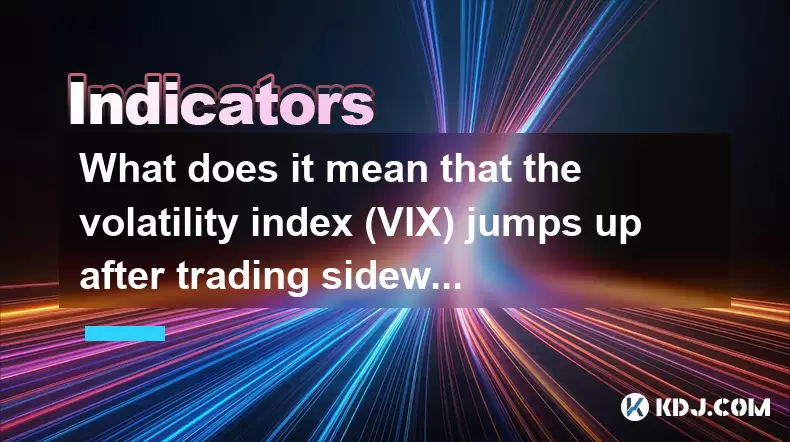
What does it mean that the volatility index (VIX) jumps up after trading sideways at a low level?
Jun 24,2025 at 09:35pm
Understanding the Volatility Index (VIX)The Volatility Index (VIX), often referred to as the 'fear gauge,' is a real-time market index that represents the market's expectation of 30-day forward-looking volatility. It is calculated by the Chicago Board Options Exchange (CBOE) based on the price inputs of S&P 500 index options. In the context of cryptocur...

What does it mean when the stochastic indicator repeatedly fluctuates at the 50 horizontal line?
Jun 24,2025 at 09:08pm
Understanding the Stochastic Indicator in Cryptocurrency TradingThe stochastic indicator is a popular momentum oscillator used by traders to identify potential trend reversals and overbought or oversold conditions. In cryptocurrency trading, where price movements can be highly volatile, understanding how this tool behaves becomes crucial for making info...
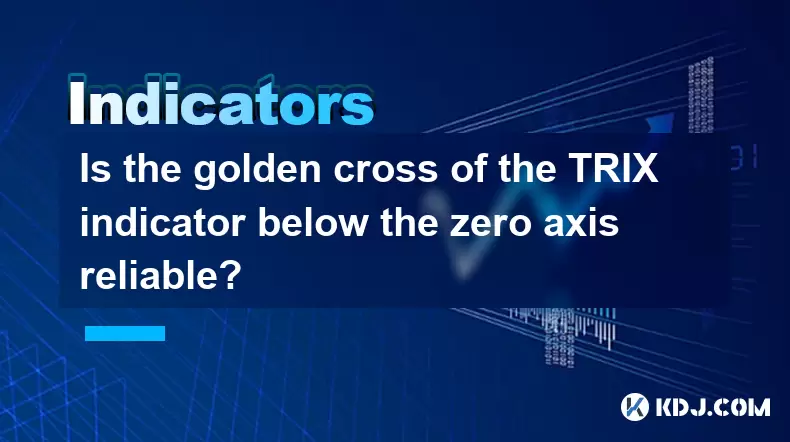
Is the golden cross of the TRIX indicator below the zero axis reliable?
Jun 24,2025 at 09:22pm
Understanding the TRIX Indicator and Its SignificanceThe TRIX (Triple Exponential Moving Average) indicator is a momentum oscillator used in technical analysis to identify oversold or overbought conditions, as well as potential trend reversals. It is calculated by smoothing price data three times using exponential moving averages and then taking the per...
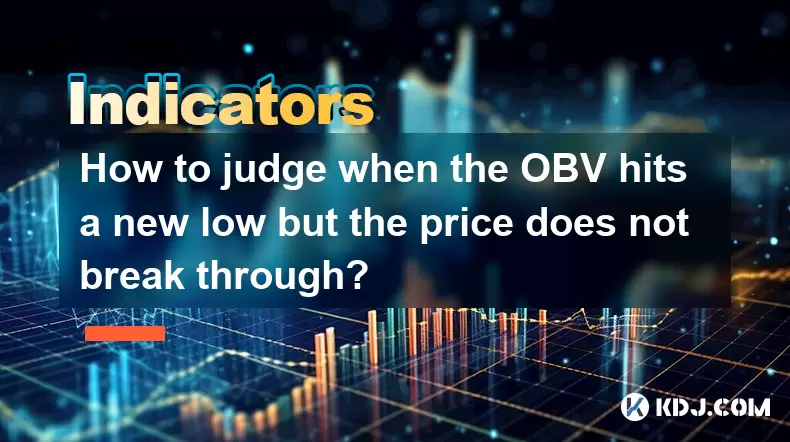
How to judge when the OBV hits a new low but the price does not break through?
Jun 24,2025 at 07:56pm
Understanding the Basics of OBV and Price ActionOn-Balance Volume (OBV) is a momentum indicator that uses volume flow to predict changes in stock or cryptocurrency prices. The core principle behind OBV is that volume often precedes price movement. When OBV hits a new low, but the price does not break through its previous support level, this can indicate...
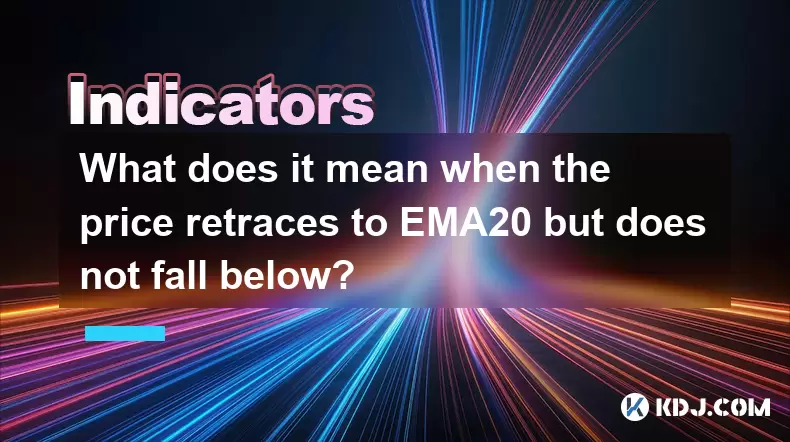
What does it mean when the price retraces to EMA20 but does not fall below?
Jun 24,2025 at 08:49pm
Understanding the EMA20 Indicator in Cryptocurrency TradingThe Exponential Moving Average (EMA) with a 20-period setting, commonly referred to as EMA20, is one of the most widely used technical indicators in cryptocurrency trading. It gives more weight to recent price data, making it more responsive to current price movements compared to simple moving a...
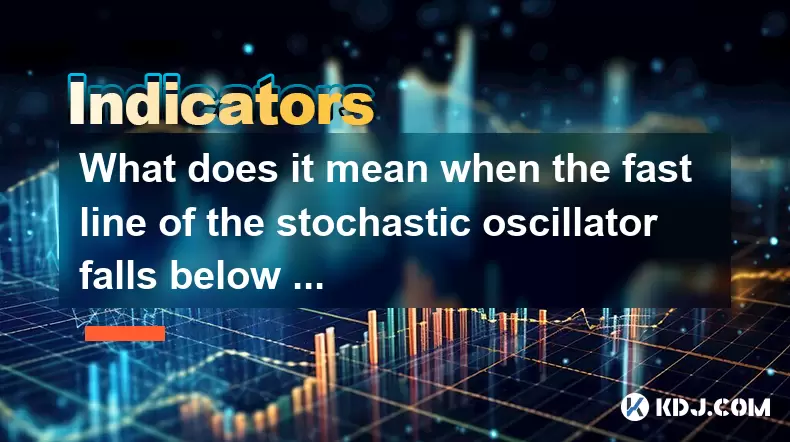
What does it mean when the fast line of the stochastic oscillator falls below the slow line?
Jun 24,2025 at 07:07pm
Understanding the Stochastic OscillatorThe stochastic oscillator is a momentum indicator used in technical analysis to assess overbought or oversold conditions in financial markets, including cryptocurrencies. It consists of two lines: the fast line (typically %K) and the slow line (typically %D). The fast line represents the current closing price relat...

What does it mean that the volatility index (VIX) jumps up after trading sideways at a low level?
Jun 24,2025 at 09:35pm
Understanding the Volatility Index (VIX)The Volatility Index (VIX), often referred to as the 'fear gauge,' is a real-time market index that represents the market's expectation of 30-day forward-looking volatility. It is calculated by the Chicago Board Options Exchange (CBOE) based on the price inputs of S&P 500 index options. In the context of cryptocur...

What does it mean when the stochastic indicator repeatedly fluctuates at the 50 horizontal line?
Jun 24,2025 at 09:08pm
Understanding the Stochastic Indicator in Cryptocurrency TradingThe stochastic indicator is a popular momentum oscillator used by traders to identify potential trend reversals and overbought or oversold conditions. In cryptocurrency trading, where price movements can be highly volatile, understanding how this tool behaves becomes crucial for making info...

Is the golden cross of the TRIX indicator below the zero axis reliable?
Jun 24,2025 at 09:22pm
Understanding the TRIX Indicator and Its SignificanceThe TRIX (Triple Exponential Moving Average) indicator is a momentum oscillator used in technical analysis to identify oversold or overbought conditions, as well as potential trend reversals. It is calculated by smoothing price data three times using exponential moving averages and then taking the per...

How to judge when the OBV hits a new low but the price does not break through?
Jun 24,2025 at 07:56pm
Understanding the Basics of OBV and Price ActionOn-Balance Volume (OBV) is a momentum indicator that uses volume flow to predict changes in stock or cryptocurrency prices. The core principle behind OBV is that volume often precedes price movement. When OBV hits a new low, but the price does not break through its previous support level, this can indicate...

What does it mean when the price retraces to EMA20 but does not fall below?
Jun 24,2025 at 08:49pm
Understanding the EMA20 Indicator in Cryptocurrency TradingThe Exponential Moving Average (EMA) with a 20-period setting, commonly referred to as EMA20, is one of the most widely used technical indicators in cryptocurrency trading. It gives more weight to recent price data, making it more responsive to current price movements compared to simple moving a...

What does it mean when the fast line of the stochastic oscillator falls below the slow line?
Jun 24,2025 at 07:07pm
Understanding the Stochastic OscillatorThe stochastic oscillator is a momentum indicator used in technical analysis to assess overbought or oversold conditions in financial markets, including cryptocurrencies. It consists of two lines: the fast line (typically %K) and the slow line (typically %D). The fast line represents the current closing price relat...
See all articles
























































































